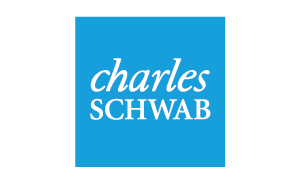Thought Leadership August 2, 2019
Participants Have The Right Mindset, But “We Still Have Work To Do”
Plan design can certainly help drive outcomes, but as an industry, we still have work to do
Sponsored by Charles Schwab

Nathan Voris
PLANADVISER: You’ve conducted this survey for ten years. What are the top three or four insights from this version, and were there any surprises?
Nathan Voris: One theme that has come through before, and did again this year, is that people acknowledge that in a world of 401(k) plans, saving and investing for retirement is a personal responsibility. This year, we asked a new question: how much will you need to accumulate for adequate retirement income? The answer was $1.7 million, on average. Two conclusions come from that – that people have a sense of what their goals should be, and that they’re making reasonable estimates.
Secondly, it’s encouraging that even when many people are auto-enrolled and have their contributions set by default, they are engaged and informed.
Third, participants are going beyond just listening to what people are telling them and are seeking solutions over and above the defaults.
PLANADVISER: What proportion of people set their own contribution rates, and how many let the plan do it for them?
Nathan Voris: Just over half of the survey respondents, 55%, told us they were saving at a rate that they were comfortable with – but that doesn’t tell us a lot. About a third had set their contributions to get the full employer match, and 8% were simply auto-enrolled and at default rates. Those statistics reveal that for 45% of people, the behavioral finance built into defaults will determine their success in accumulating assets. A thoughtful plan design around default rates will work in the participants’ and sponsor’s favor.
Sponsors can implement a “stretch match,” where instead of matching employee contributions dollar for dollar up to 5% of pay, they match 66% up to 7.5%. That doesn’t cost the employer any more, but it does encourage participants to save 2.5% more of their own dollars. These aren’t new ideas, but if you implement them in a way that works, it can raise participation and saving rates.
PLANADVISER: Did this survey tell you anything new about participants’ use of plan advice and coaching?
Nathan Voris: Industry-wide, about 85% said, “I would be comfortable asking for advice,” but only 52% feel their situation warrants financial advice. We believe everyone can benefit from receiving advice, and 95% of survey respondents said they would be confident making 401(k) investment decisions if they had help from a financial professional.
Retirement calculators are another option to deliver guidance; however, a calculator is only as good as the actions it prompts. Of those who have used a calculator, 71% felt encouraged and wanted to learn more, and 61% took positive actions related to their finances, such as increasing 401(k) contributions, changing spending habits, or accessing online advice.
We’ve come a long way since 2006 and the Pension Protection Act, but there is still basic blocking and tackling to be done – on saving rates, budgets, and all those things we know are important. Plan design can certainly help drive outcomes, but as an industry, we still have work to do.
For more information, visit
schwab.com/mas
Source: Schwab Retirement Plan Services, Inc. 401(k) Participant Survey, 2019.
(0819-9P3C) (08/19)
